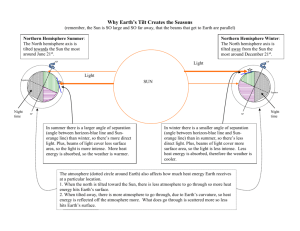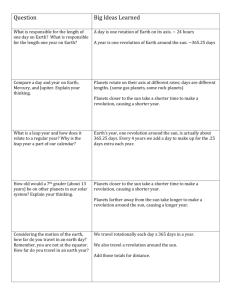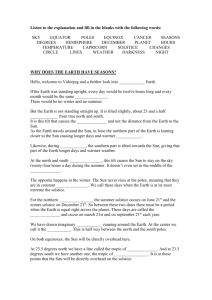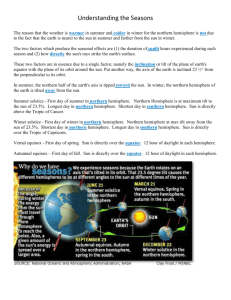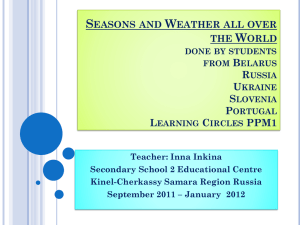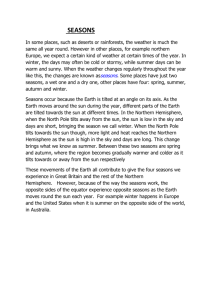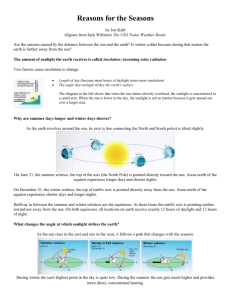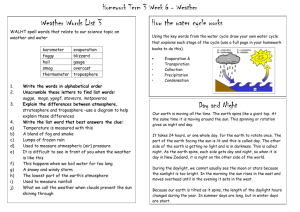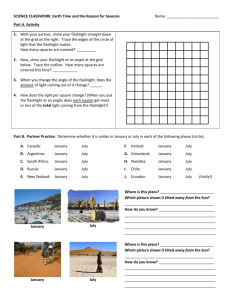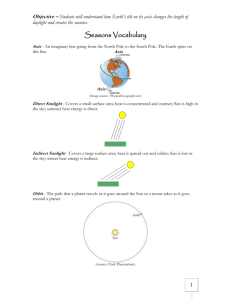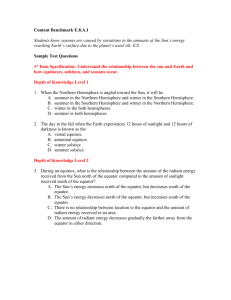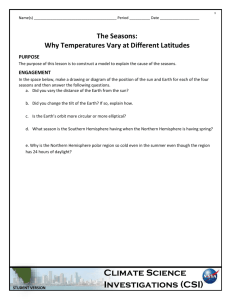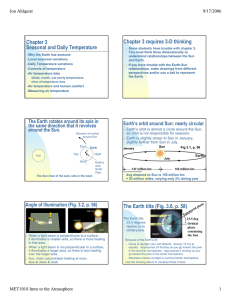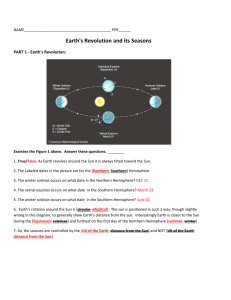summer
advertisement
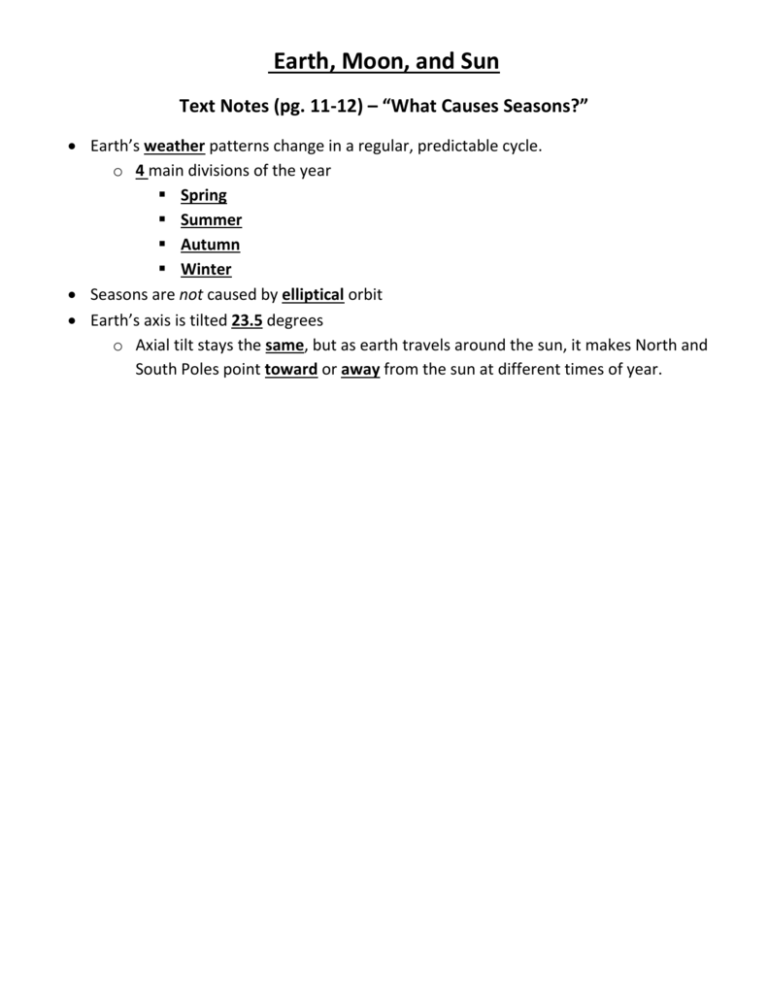
Earth, Moon, and Sun Text Notes (pg. 11-12) – “What Causes Seasons?” Earth’s weather patterns change in a regular, predictable cycle. o 4 main divisions of the year Spring Summer Autumn Winter Seasons are not caused by elliptical orbit Earth’s axis is tilted 23.5 degrees o Axial tilt stays the same, but as earth travels around the sun, it makes North and South Poles point toward or away from the sun at different times of year. Spring Summer Winter North Pole pointed toward the sun North Pole pointed away from sun Between summer and winter Between winter and summer June 20th or 21st to September 22nd or 23rd December 21st or 22nd to March 20th or 21st Daylight hours decrease Daylight hours increase Weather gets colder Weather gets warmer Warmer weather b/c... Colder weather b/c... - Sun's light strikes directly which creates more solar energy which is concentrated in smaller areas - Sun's light is spread out over a larger area due to angle of hemisphere which is tilted away from sun. - Receives more hours of daylight -Receives fewer hours of daylight Autumn Solstices Equator is at zero degrees latitude Because Earth is tilted on its axis, the Sun’s position relative to the equator is always changing. Twice a year a solstice occurs o Summer Solstice June 20th or 21st Northern hemisphere is tilted toward the Sun. Sun appears overhead at 23.5 degrees north of the equator (Tropic of Cancer) 1st day of summer in Northern Hemisphere Longest period of daylight Southern Hemisphere is tilted away from Sun and its their 1st day of winter. o Winter Solstice December 21st or 22nd Northern Hemisphere is tilted away from the Sun Sun appears overhead at 23.5 degrees south of the equator (Tropic of Capricorn) 1st day of winter in Northern Hemisphere Shortest period of daylight Southern Hemisphere has their longest period of daylight and its their 1st day of summer. Equinoxes Sun’s rays strike the equator directly Day (12 hours) and night (12 hours) are of equal length in both hemispheres From the Latin word for “equal night” o Vernal Equinox March 20th or 21st Beginning of spring in Northern Hemisphere o Autumnal Equinox September 22nd or 23rd Beginning of autumn in Northern Hemisphere
